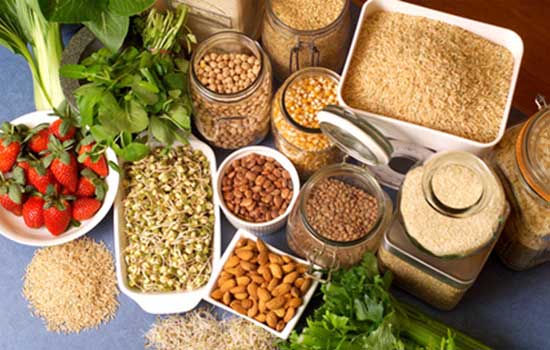All successful diets share two attributes: they’re low in sugar and high in fiber. Most of us intuitively get the restriction on sugar. After all, a minute on the lips can mean a lifetime on the hips! But few of us understand the role that fiber plays in weight management, let alone its other health benefits.
As a rule, our bodies do not use dietary fiber as energy sources. The overwhelming majority of it passes through our digestive tract without being metabolized. Yet it performs vital functions along the way. Dietary fiber takes two forms: soluble and insoluble.
Soluble fiber shows up in foods such as oat bran, barley, legumes (beans, lentils, peas), nuts, seeds, and some fruits and vegetables. When consumed, it forms a soft, sticky, gel-like substance that slows down the digestion and absorption of glucose, fructose, and fat. This delay gives the liver a chance to fully metabolize the incoming food. Soluble fiber provides the raw materials for bonding with bile acids to lower cholesterol, a known risk factor for heart disease. It regulates blood sugar to minimize insulin surges, a risk factor for diabetes. Soluble fiber also promotes colonization of good bacteria in the gut, which improves nutrient absorption and immune function.
Insoluble fiber shows up in foods such as whole grains, nuts, and fruits and vegetables (notably in the stalks, skins, and seeds). It’s the tough stuff that doesn’t dissolve in water, often referred to as “roughage.” It adds bulk to move food through the digestive track; it helps prevent constipation and diverticulitis. Like soluble fiber, it decreases cholesterol and lowers blood glucose.
High fiber foods support weight loss and healthy weight management. They dilute the caloric content of our diets while simultaneously requiring more time to chew and process. They delay the rate at which food empties from the stomach into the intestines, thereby creating a sense of fullness. A slower rate of digestion gives the body time to generate and release the satiety hormone leptin which tells the brain that it has taken in enough food. The measured release of sugar into the bloodstream improves insulin sensitivity. And higher fiber consumption has been associated with lower rates of cancer in the colon and rectum.
In order to gain all of these health benefits, fiber must be eaten in whole, intact food. Whole grains must be uncracked, uncrushed, and unadulterated. Fruits and vegetables must go from the tree, vine, or ground to the table, relatively unchanged. As a case in point: When juicing fruits and vegetables, the sheering action destroys the insoluble fiber and causes sugar absorption into the bloodstream to soar.
So how are Americans doing with fiber consumption?
The Institute of Medicine tells us that women should consume a minimum of ~25 grams of fiber per day and men should consume ~38 grams per day. Yet according to the USDA, fiber intake among women and men comes in at 15 and 18 grams per day, respectively. The standard American diet features an excess of meats, fats, and processed foods, and too little fiber-rich foods.
To increase your fiber intake, consider shifting your eating habits toward a whole food plant based diet. Fiber is naturally concentrated in fruits, vegetables, legumes, whole grains, nuts, and seeds. These foods are also rich in vitamins, minerals, and phytonutrients. There are lots of delicious recipes for preparing these foods. Over time, you’ll find that you won’t miss all of the processed foods that used to adorn your meals and snacks. And you’ll gain a whole lot of other health benefits while you’re at it!
